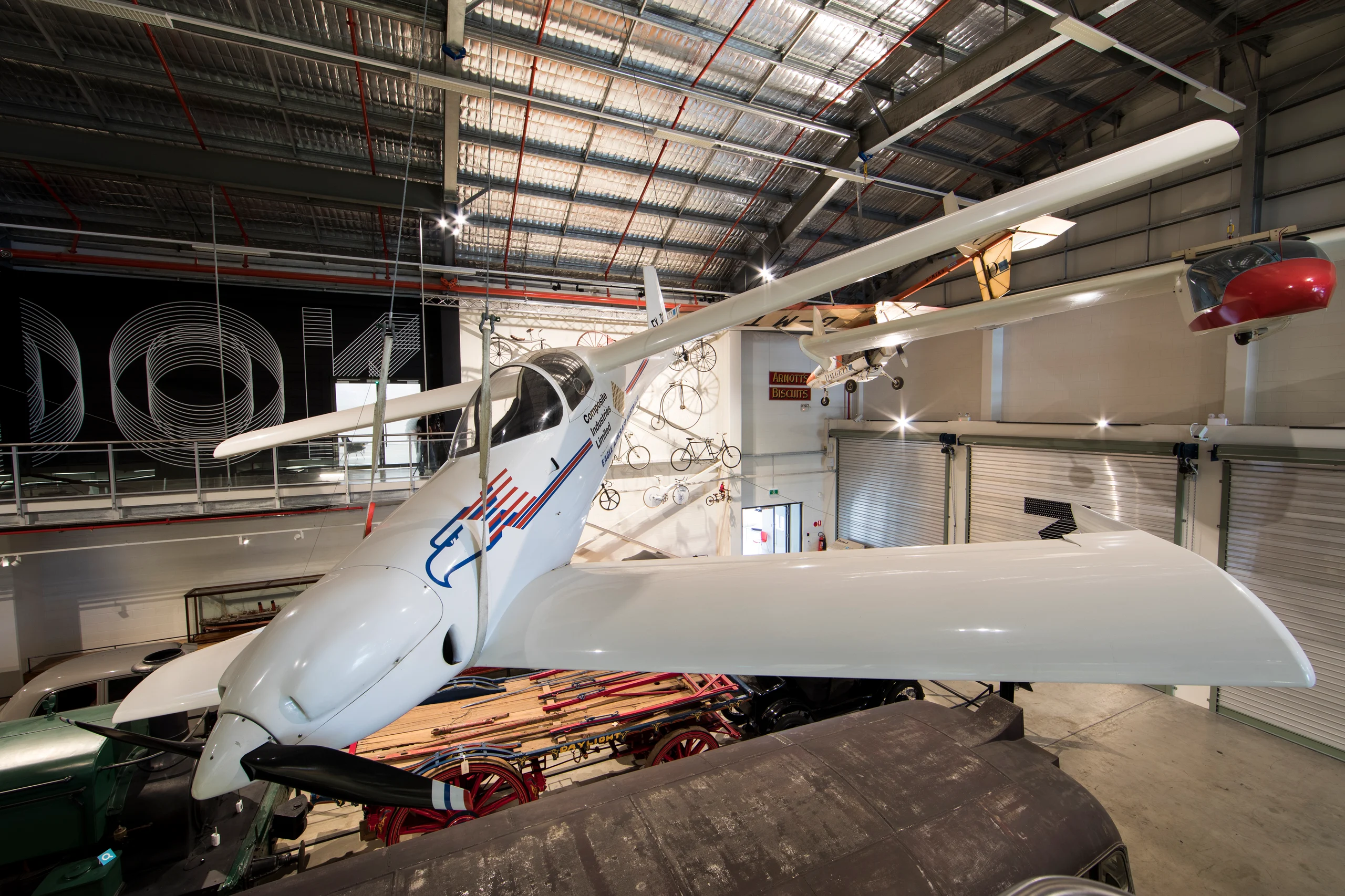
Physical Description
Canard monoplane consisting of two parts (the fuselage and tail) made of kevlar and carbon fibre. The exterior of the aircraft is white gelcote with blue and red stripes and an eagle logo on the side of the body. It features an ovoid cockpit with perspex cover and single seat inside.
Object Statement
Aircraft and components, Eagle-X prototype, kevlar / carbon fibre, made by Composite Industries Limited, Western Australia, Australia, 1984
Production
The Eagle XP-1 is a proof of concept aircraft to develop a knowledge by the manufacturing company, Composite Industries Ltd., of Western Australia, of the use of composite materials - carbon fibre and kevlar - in the construction of light aircraft and also to develop an aircraft that was relatively safe and forgiving of inexperienced pilots. The results of their experiments with the Eagle XP-1 was the development of the Eagle XTS, the two-seat, tricycle undercarriage, version. Like its predecessor it is of composite construction and retains the canard configuration that provides a safety barrier to an aerodynamic stall of the main wing. However, there was interest within the company to continue production of the XP-1 aircraft if demand warranted. The demand did not eventuate and the Museum's aircraft remains the only single place Eagle produced.
Dimensions
- Height: 1200 mm
- Width: 490 mm
- Weight: 200 null
History
Eagle Aircraft Australia began as a subsidiary of Composite Industries Ltd, itself a part of the Graham Group of Companies in Perth, Western Australia. Eagle Aircraft was established in 1984 to exploit the "proof of concept" aircraft, the Eagle XP-1, developed by Composite Industries Ltd. as a response to interest perceived in the farming and mining communities of Western Australia, the area of operation of Graham Group, for a cheap, reliable, easy and safe to operate light aircraft that was able to minimise aviation bureaucracy. The Eagle XP-1 project was begun in 1981 and the design parameters for the aircraft were place in the hands of American John Roncz who had worked with Bert Rutan in the development of several composite light aircraft. The resulting design of the Eagle is similar to the Rutan "Quickie" on which John Roncz worked. The prototype flew in 1984. On the 30/1/1985, during a test flight in "hot, gusty conditions" the Eagle lost height and speed causing an out landing in a wheat field as the pilot was endeavouring to return to the airstrip at Cunderdin, W A . The aircraft received substantial damage. Despite this setback, in 1987 the Eagle XP-1 was judged the best in The Australian Financial Review - AMEV Finance Ltd new product award. The prize of $25,000 was presented to Composite Industries Ltd of Perth by the then Minister of Technology and Commerce, Senator Button at the Australian Financial Review New Product and Technology Expo at the Function Centre at Rose Hill race course in Sydney. The Eagle was transferred from Rose Hill to the Powerhouse Museum in November 1987.